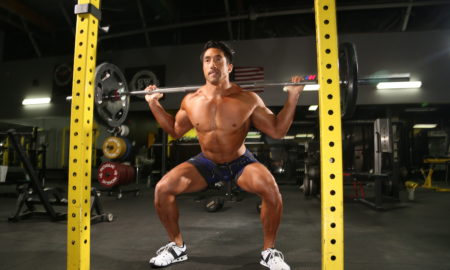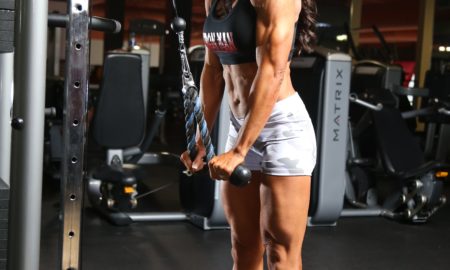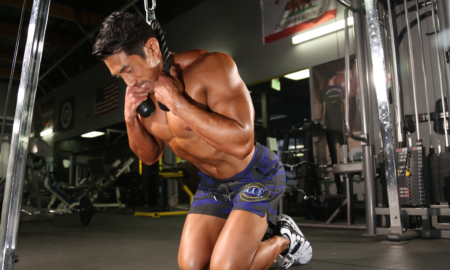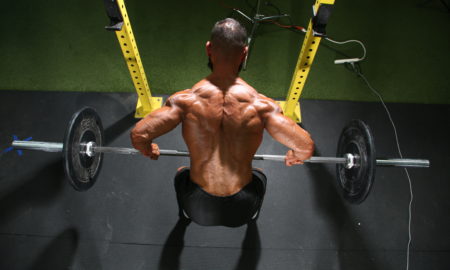There’s been much discussion over decades about knee pain associated with squats, lunges, leg extensions and leg presses. Uninformed doctors told the sports community in the 1960s that squats would ruin knees. Those same doctors wholeheartedly supported the use of leg extensions. Unfortunately, many patellas, a.k.a. kneecaps, were made more painful and new ACL grafts—reconstructed anterior cruciate ligaments—were stretched with repetitive isokinetic leg extensions. Although the knee has received much attention, there has been very little discussion of the effect squats, lunges and leg presses have on the hip.
The hip is a ball-and-socket joint, like the shoulder. The shoulder has a very shallow socket, which allows a wide variety of movements. The hip has a deeper socket that allows many movements, but not as many as the shoulder. The socket shape also sets up potential problems.
Your body didn’t come off an automobile assembly line. Human bodies frequently have subtle differences in anatomy—anomalies, they’re called. They can lead to a problem in the hip clinically known as femoroacetabular impingement, or FAI for short. The ball is the head of the femur; the socket is the acetabulum in the hip. The impingement occurs in one of two ways, cam or pincer.
The cam form of FAI occurs because of an extra “bump” of bone near the top of the femur. That bump hits, or impinges, the top rim of the socket with full range of motion. It primarily damages the cartilage in the joint and injures the cartilage ring around the socket as well. Some people have an overhang of the top of the socket and don’t have the extra bump. That problem is the pincer form of impingement.
FAI can force some people to squat less deeply. You’ve heard about squatting depth because of knee pain or, in some cases, alleged knee pain. Most trainees never learn how to squat properly. It’s quite amazing to see Olympic weightlifters performing full back squats, full front squats, full cleans, full snatches and then hear them say they don’t have any knee pain. At the hip you have a much different situation.
A deep squat for those with the cam impingement can repeatedly damage the hip cartilage as the bony bump hits the cartilage. The deep squat for those with pincer impingement will tear the cartilage ring. Most patients with impingement have both cam and pincer issues.
You hear about hip injuries in sports on a more regular basis—for example, the hip surgery of Hall of Fame hockey player Mario Lemiuex before the 2002 gold medal performance in hockey, football player Priest Holmes and, more recently, baseball great Alex Rodriguez. This is all public information. Teams and universities are trying to screen their athletes, particularly football players, because of an increase in hip injuries. The screening process is improving, athletes with FAI have been identified, and hip injuries have been avoided.
The doctor leading the way with hip diagnosis and arthroscopy is Marc Philippon, M.D. “We have now a better understanding of hip injuries in sports,” he says. “Most importantly, we now have a very accurate way of making the diagnosis and have evidence-based surgical treatments that are very successful, such as arthroscopic treatment of FAI-related injuries.”
Hip injuries are caused by extreme range of motion, such as kicking in martial arts, inner- and outer-thigh machines, deep squats, excessive stretching, football, hockey and even yoga. I will address this important topic in more depth in a future column.
Editor’s note: Visit www.SoftTissueCenter.com for reprints of Horrigan’s past Sportsmedicine columns that have appeared in IRON MAN. You can order the books, Strength, Conditioning and Injury Prevention for Hockey by Joseph Horrigan, D.C., and E.J. “Doc” Kreis, D.A., and The 7-Minute Rotator Cuff Solution by Horrigan and Jerry Robinson from Home Gym Warehouse, (800) 447-0008, or at www.Home-Gym.com.




















You must be logged in to post a comment Login